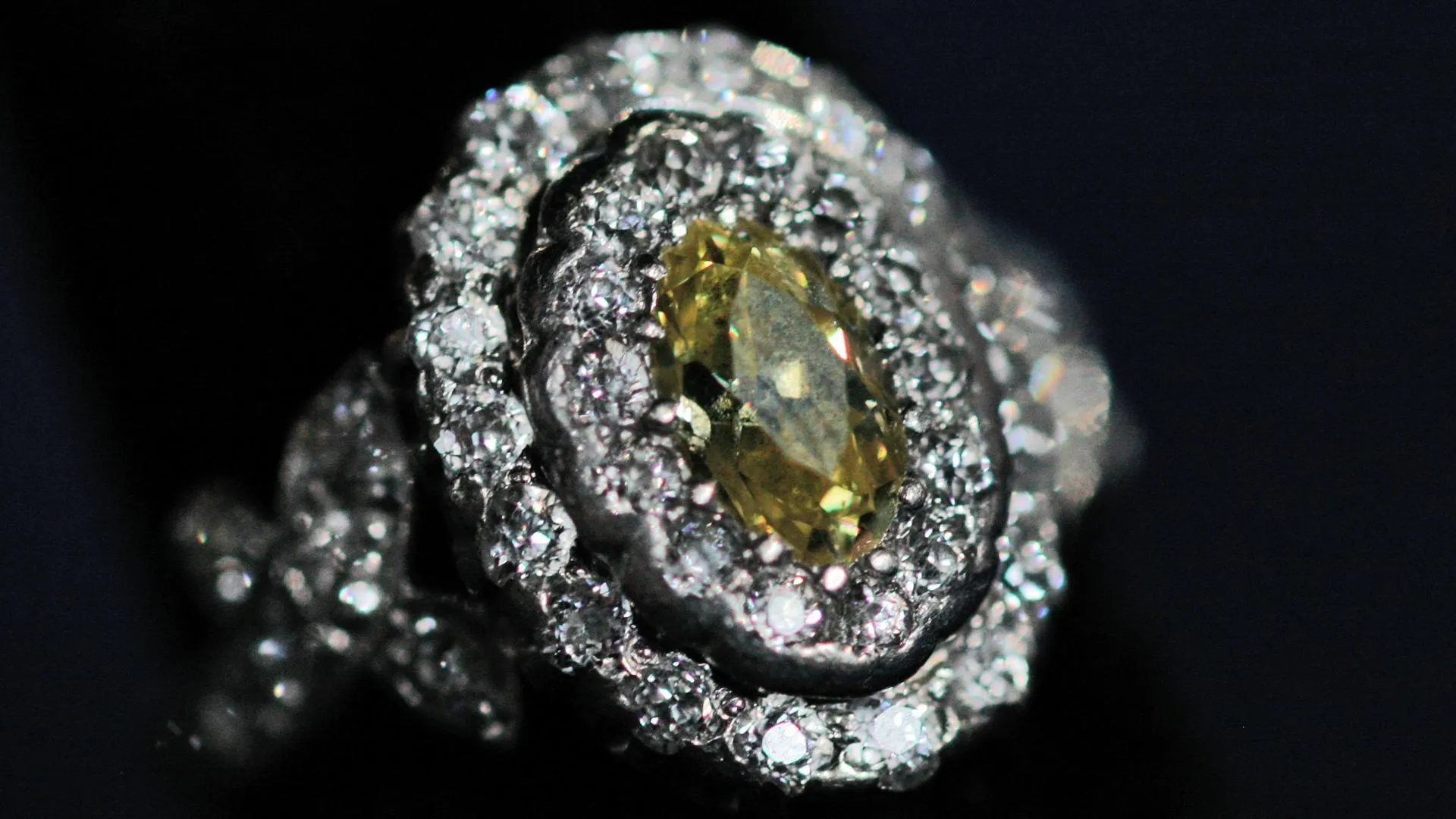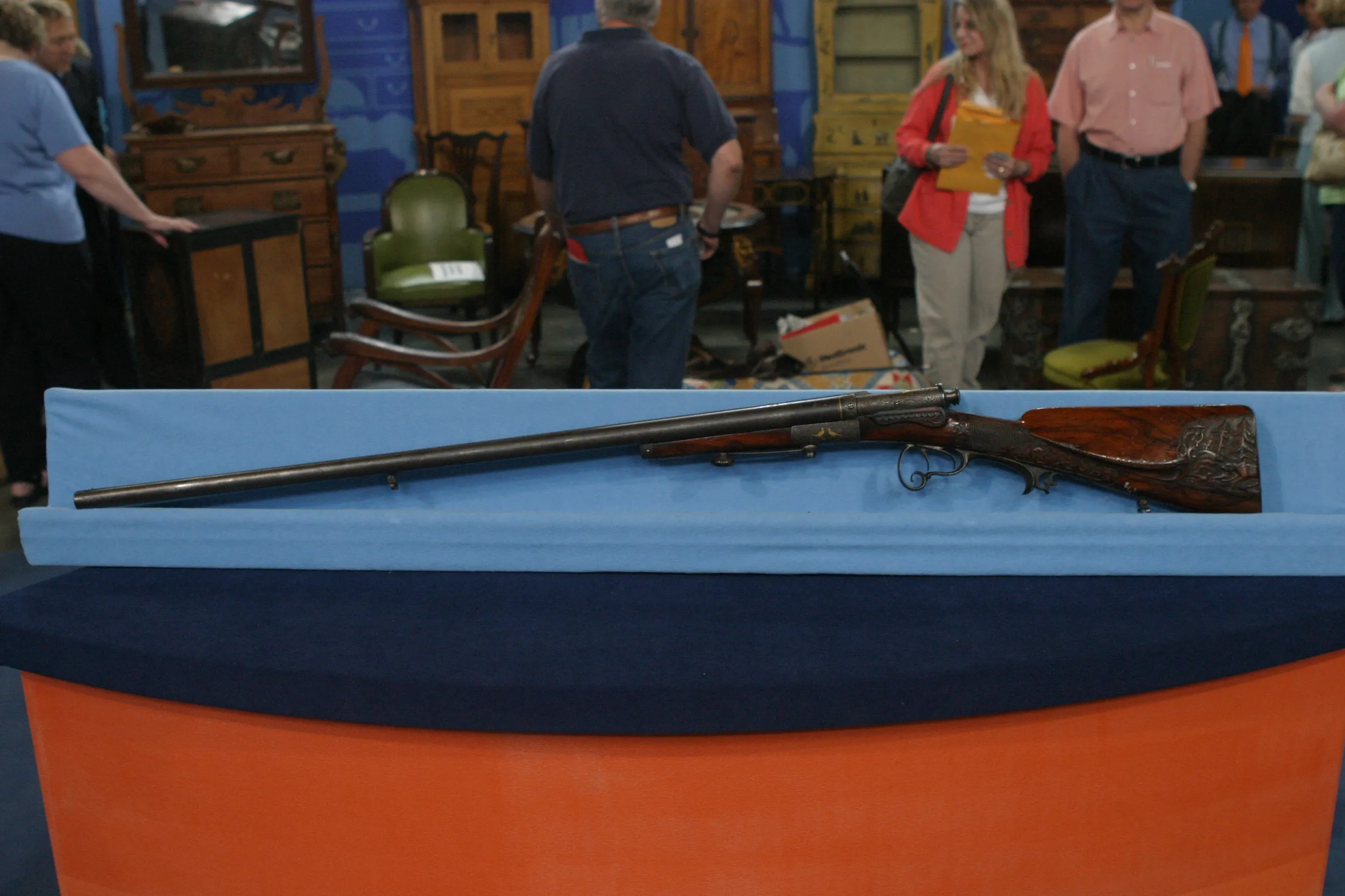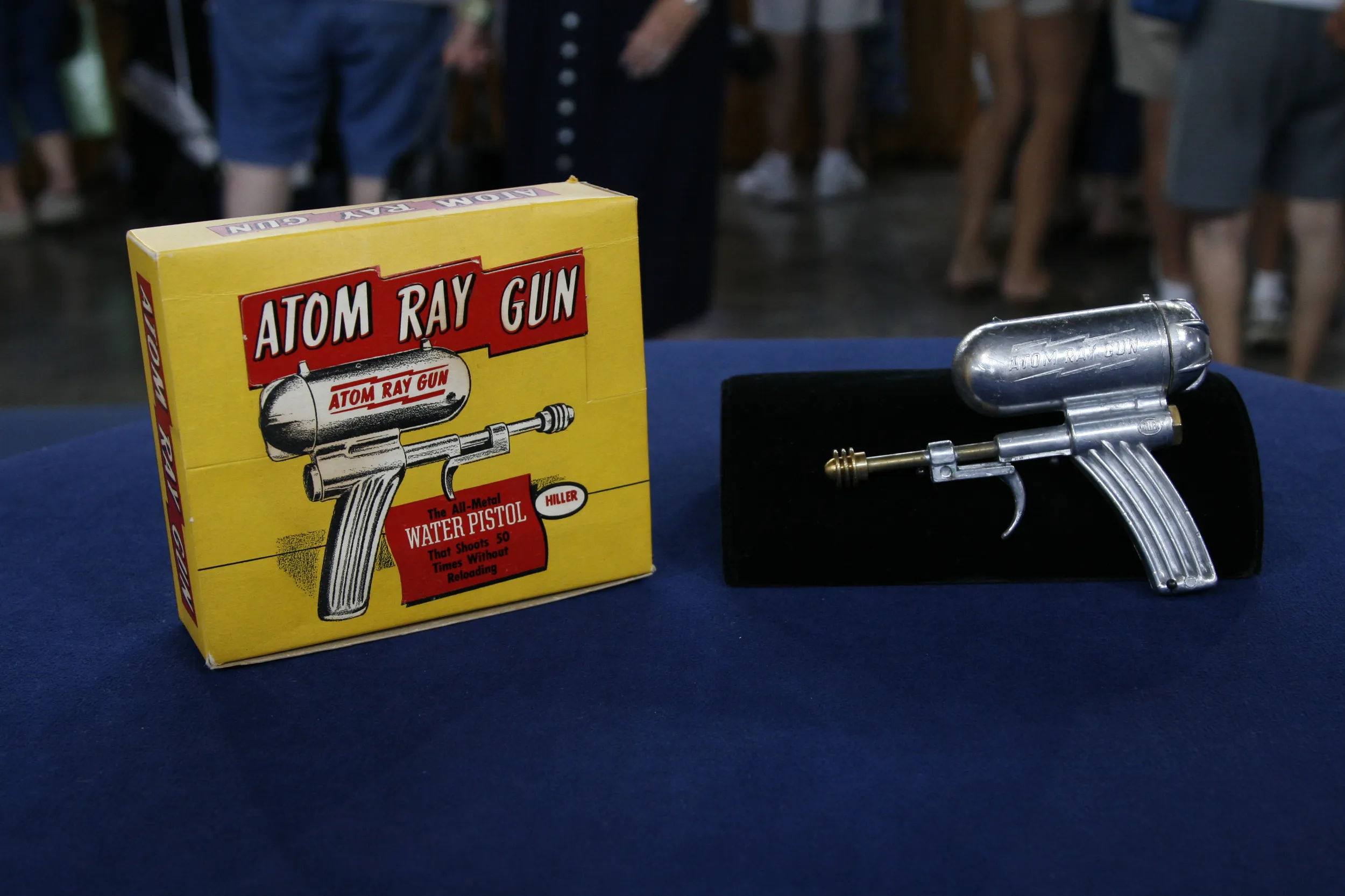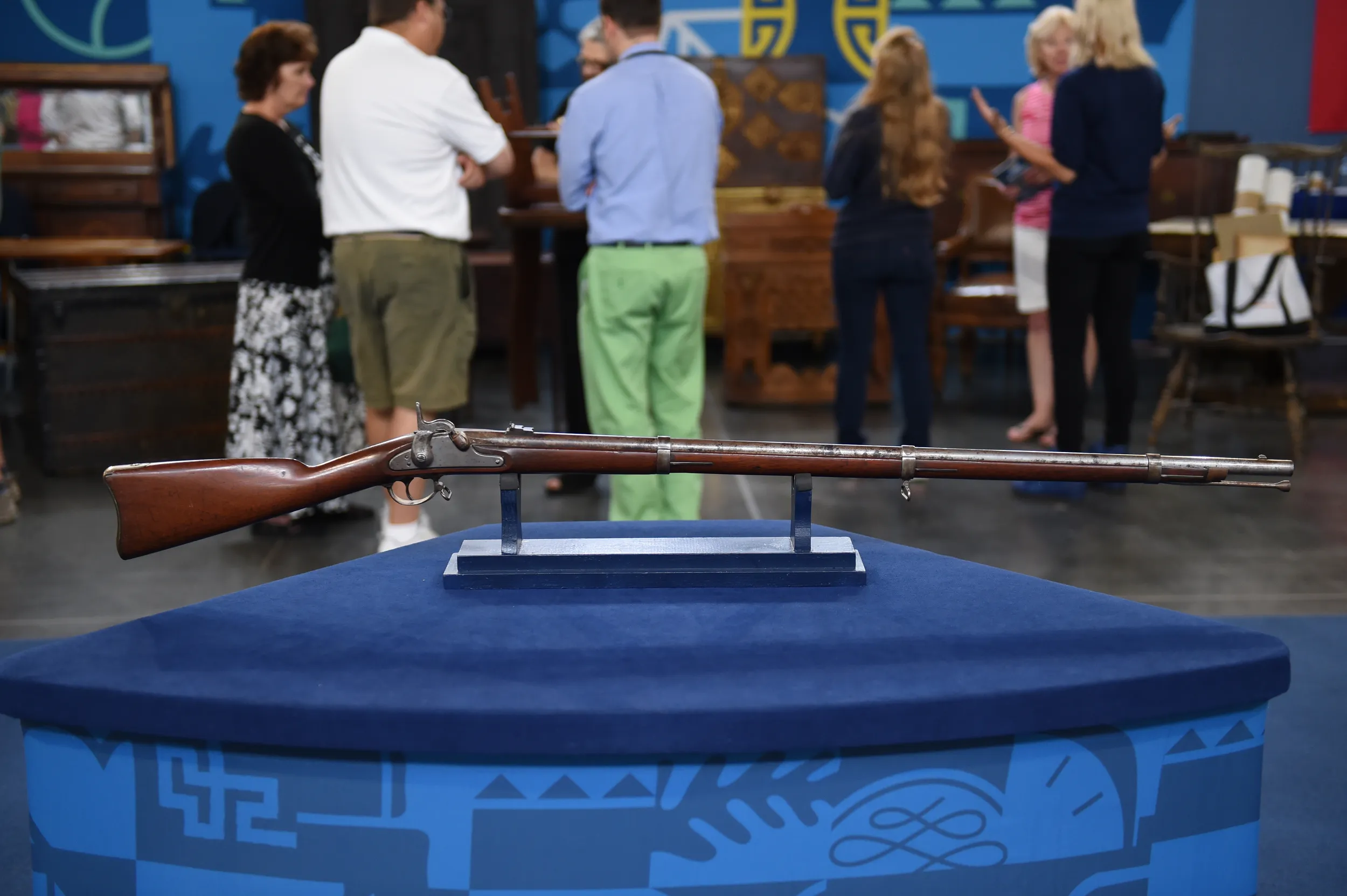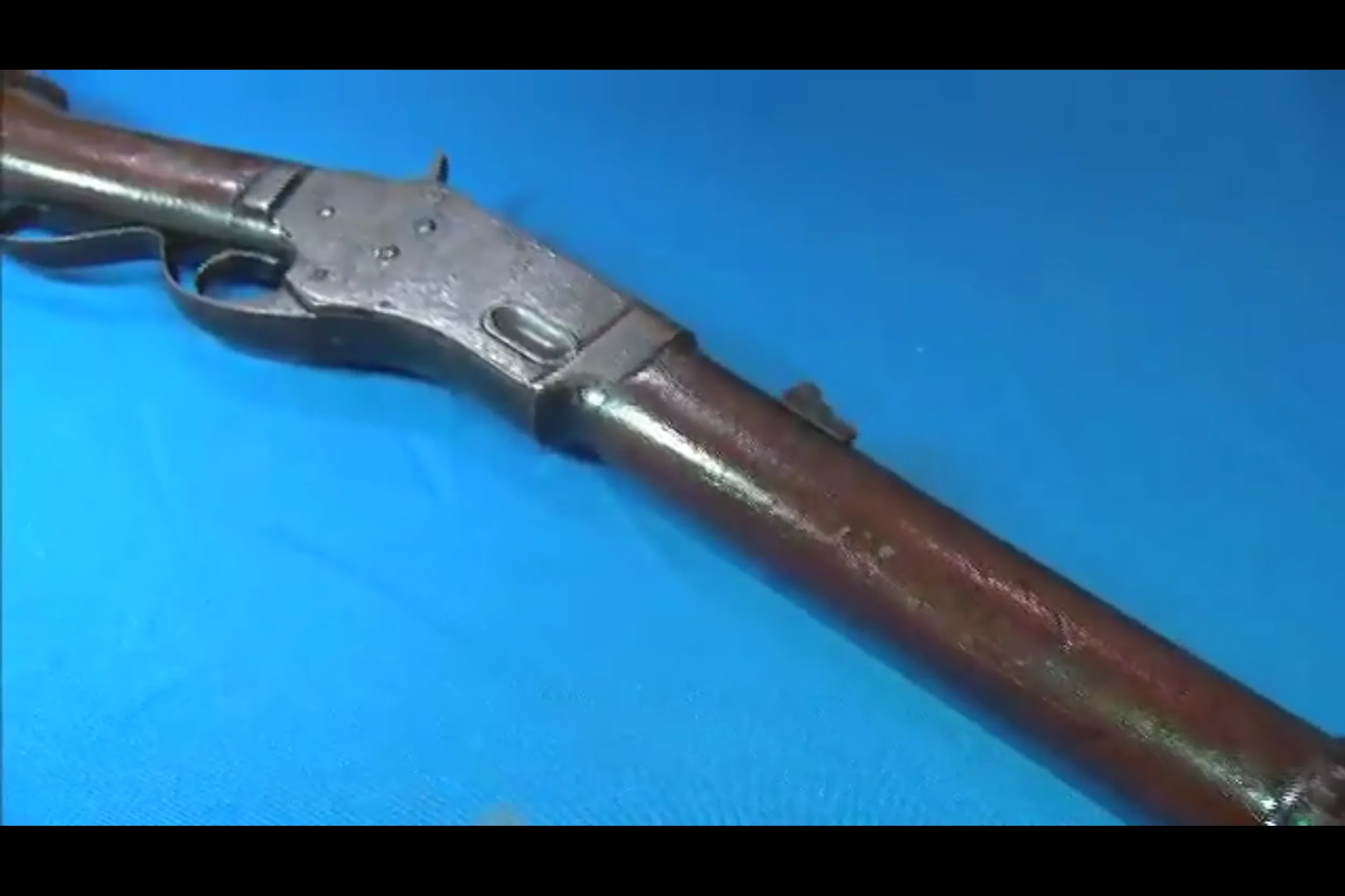APPRAISER: So what did you bring in for us today?
GUEST: Um, sword, pistol, and picture of my great-great- grandfather.
APPRAISER: Who was...?
GUEST: Captain William T. Swain with the Union Army.
APPRAISER: Who did he serve with?
GUEST: The 12th Illinois Infantry out of Tiskilwa, Illinois.
APPRAISER: The hat has the hunting horn design on it. That's the symbol for the infantry branch of the service. And in the center of the horn is the number 12, for the 12th Regiment. On this side, we have his Colt revolver. On this side, we have his sword. We have his pistol and we have his sword; the actual pieces that he had in the picture. Did he survive the war?
GUEST: No, he fought in four battles. Shiloh was the last one, where he was mortally wounded.
APPRAISER: Right, Shiloh, in April 1862. How did the pieces make it home?
GUEST: After he was wounded, they put him on a boat going back up the Tennessee River, where they were going to take him back home. A couple of days later, he died on the way home.
APPRAISER: From the infection?
GUEST: Yes.
APPRAISER: April, hot month. They buried the soldiers right away. They buried all the soldiers in mass graves. If they hadn't have put him on that boat and sent him home, these pieces wouldn't be with us today. And the pieces that we have, we have a Model 1851 Colt revolver. It's a Model 1851 Navy, even though infantry and cavalry used it more so than the Navy. It's a .36 caliber, and fortunately, Mr. Colt kept good books. If you notice, it has a 103 serial number. That means that this gun was made in 1861. It has the correct Colt marks, original grips. Just a nice gun all the way around. The sword is the classic Civil War foot officer's sword. It's the Model 1850 foot officer's sword. This sword, even though it's unmarked, it's actually made in Europe and brought over for retail here in the States. We have the original scabbard, original grip and wire. Just a really pretty sword. And what is this piece?
GUEST: Uh, it's considered a canister ball. According to family history, that's what killed Captain Swain.
APPRAISER: A canister round? It's actually a coffee-can-looking thing, and it has 27 balls in it. This is the size that fit in a six-pound cannon. They're hand-cast, and you can actually see the mold ring around the side of it. And when they fired them out of a cannon, it basically worked like an oversized shotgun blast, blowing out, causing tremendous devastation to the troops. Your ancestor must have been a wealthy man, because these are more private purchase rather than government issue. If you notice, the revolver doesn't have any inspector's initials on the gun or on the grips. He would have brought it with him from home. Have you ever had the pieces appraised?
GUEST: No, I never have.
APPRAISER: The image, on its own, is about a $750 to $1,000 image, because he is armed, it's very well done, we know who it is, and because they actually tinted in the sash. That was hand-done by the photographer. It's a tintype. The pistol is worth about $2,000. The sword is worth about $1,500 to $2,000. The canister ball, without knowing who it's from, is about a $10 to $20 piece. When you bring everything together, and you consider the history that your ancestor brought with these pieces, it's a piece, if I was going to insure this group, I would insure it for about $7,500.
GUEST: Okay, great. Thank you. (laughs)


